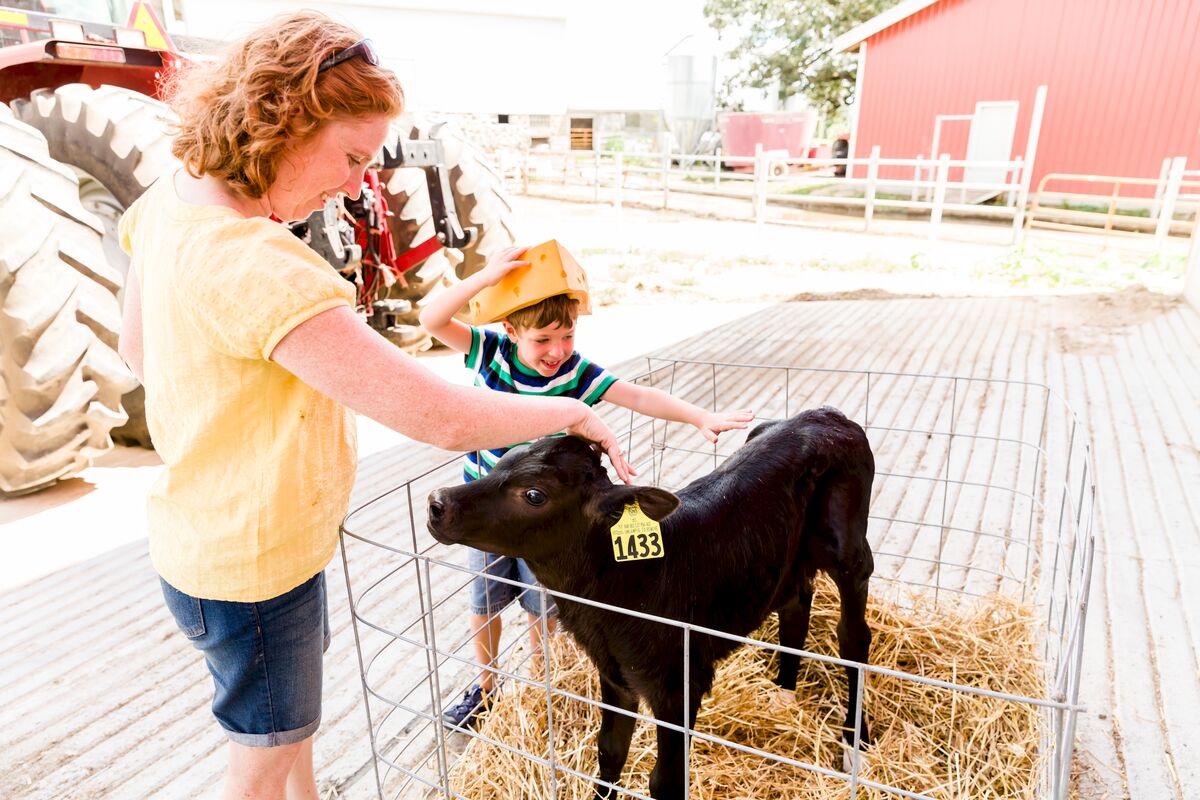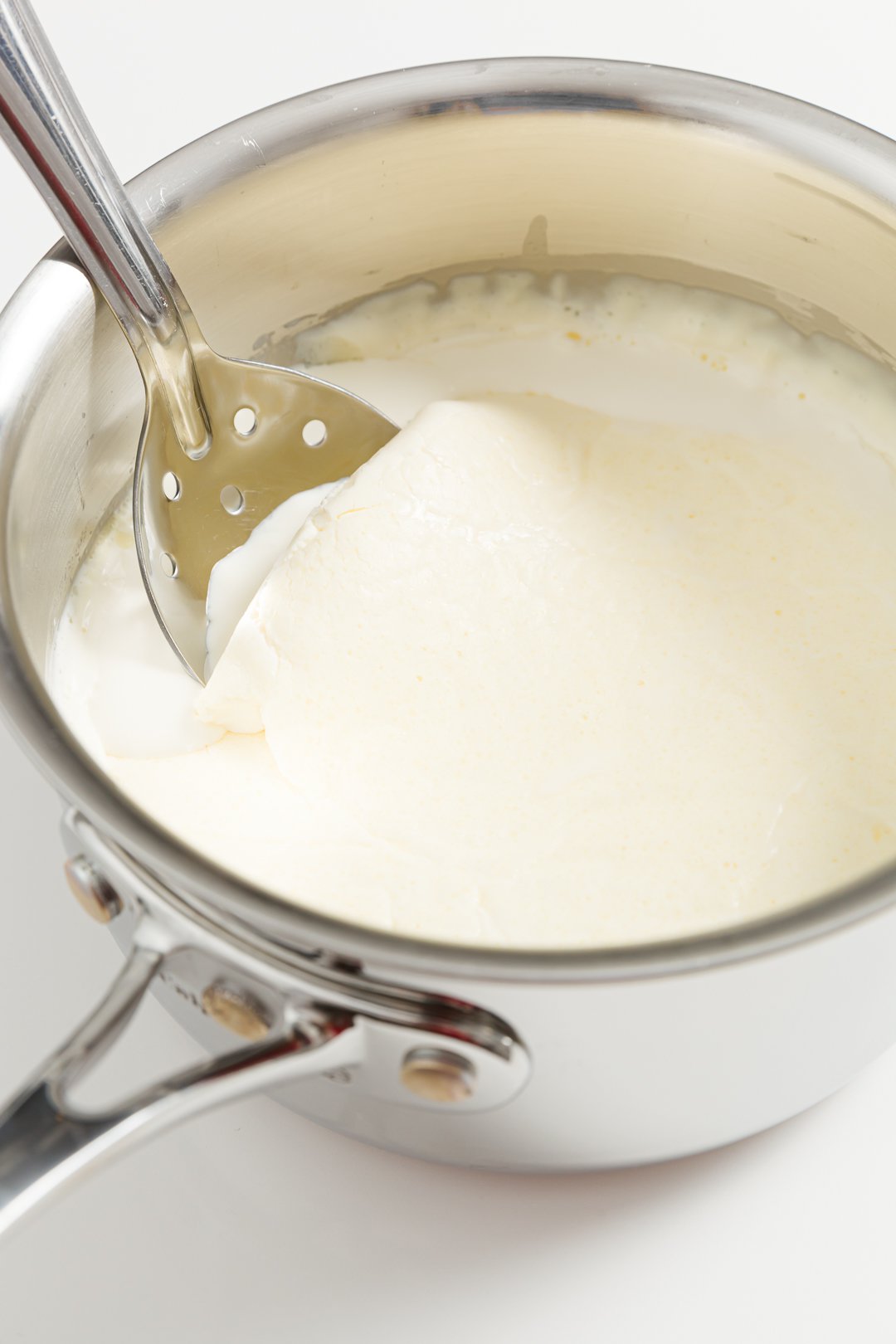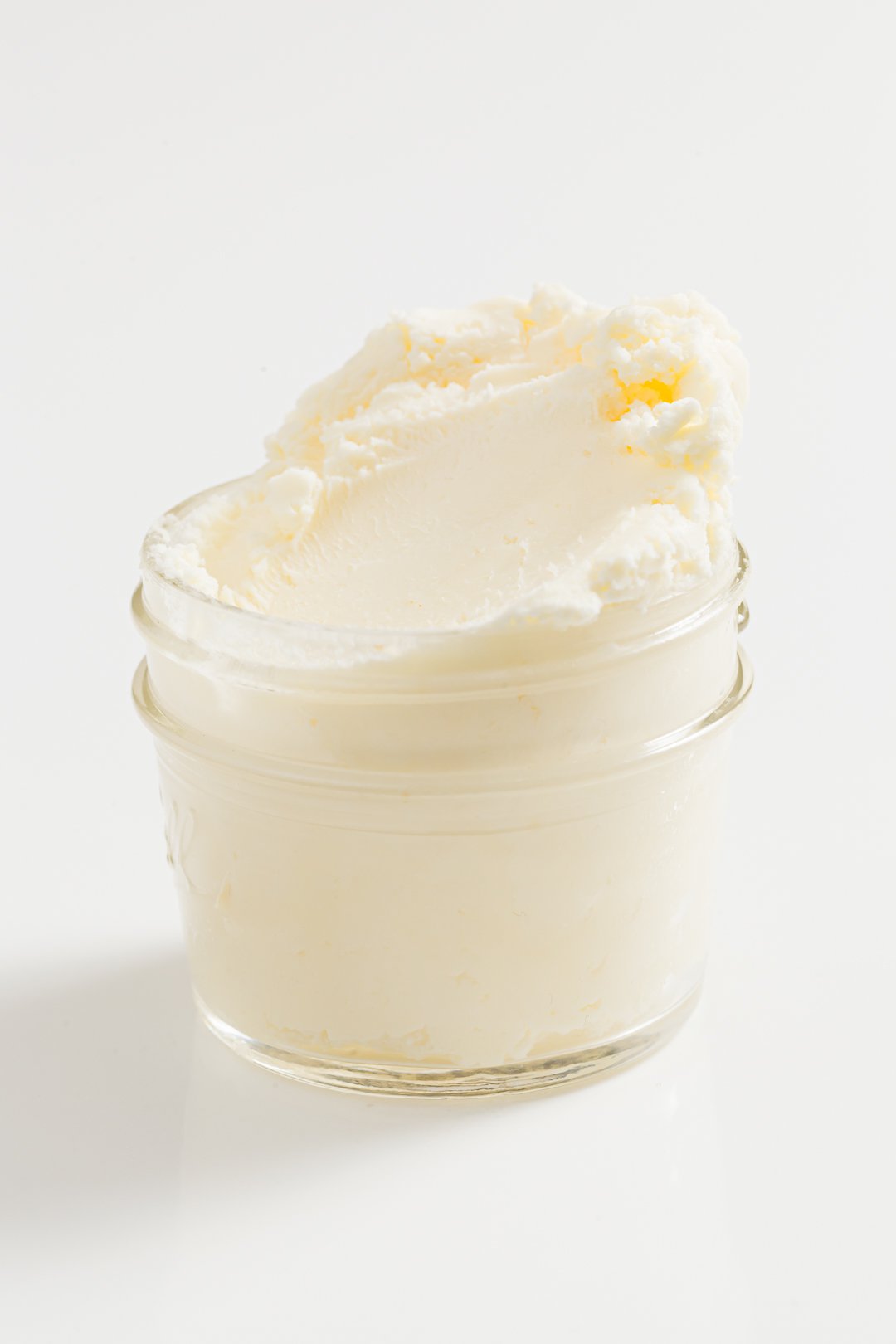Easy Homemade Clotted Cream
It’s so incredibly easy to make clotted cream, a delicious British topping for scones and other pastries. This recipe requires only heavy cream and an oven or rice cooker, though you can also make it in a slow cooker or electric pressure cooker.
Always make this condiment yourself; the end result tastes so much better than most store-bought versions.

Ingredients
There is only one ingredient in this recipe: heavy whipping cream.
The choice of cream is important! You’ll want to get heavy whipping cream that is not ultra-pasteurized. Clotting will work best with an unpasteurized or regularly pasteurized (not ultra-pasteurized) cream. I didn’t try making the recipe with an ultra-pasteurized one, but – based on my research – I suspect it wouldn’t work well.
For more information on ultra-pasteurization and why it’s not ideal for making clotted cream, check out the FAQ from the New England Cheese Making Society.

It is also important to look for heavy whipping cream with as high a fat content as you can find; I like to buy a local brand with 40% fat content. The quality of your clotted cream will depend on the quality of your heavy whipping cream, so splurge and buy the freshest, best kind that you can find.
How It’s Made

Heating heavy whipping cream with low, indirect heat causes the cream to separate and undergo a texture and flavor transformation (similar to what happens when you make homemade butter). When the heated cream cools, you skim the “clotted” cream that’s risen to the surface for use.
I’ve personally tested making clotted cream in both an oven and in a rice cooker – read on to learn about those methods. Others have had success using a slow cooker or electric pressure cooker, and I link to posts about those below. As I try or learn about other methods, I’ll be sure to update this section with new information and photos.
Using an Oven
I originally got this recipe from Sustainable Table [paid link]. As I said above, there isn’t much to it. There is only one ingredient: heavy whipping cream. Use as much as you would like. I used two pints (4 cups) – be sure to see my notes above about about not using ultra-pasteurized cream.
In addition to the heavy cream, you will also need a lot of time. This recipe can take over 8 hours and you will need to check in on it periodically after an initial 8 hour period is up. You will need another 8 hours to chill the homemade clotted cream before you can use it.
To make clotted cream in the oven, pour heavy whipping cream into an oven-safe pot.

Cover the pot and place it into an oven set at 180 F.
Leave the covered pot in the oven for at least 8 hours. You will know that the clotted cream recipe is done when a thick, yellowish skin forms above the cream, as shown below.

Let the pot cool to room temperature and then refrigerate for another 8 hours.
Skim off the yellowish skin above the cream in your pot and put into a jar or other container – this is the clotted cream! The remaining milky liquid is a great addition to coffee or tea, but it isn’t suitable for most baking or making Chantilly cream as you’ve skimmed off much of its fat.

Using a Rice Cooker
As long as your rice cooker has a keep warm setting that keeps the liquid above 140 F, it’s straightforward to use this method. A temperature above 140 F is necessary to make the cream clot and to inhibit bacterial growth.
Tip: My rice cooker is a basic model that works perfectly well for this task, but you should first try putting water in yours and checking its temperature with a thermometer to make sure that your rice cooker will work.
Start by pouring heavy whipping cream into the bowl of your rice cooker.

Next, close your rice cooker and set it to the keep warm setting. You’re going to want it to remain on the keep warm setting for 12 hours. Check periodically to make sure your rice cooker hasn’t shut off.

Remove the rice cooker bowl, allow to cool to room temperature, and refrigerate for at least 8 hours.

Use a slotted spoon to skim the yellowish liquid – the clotted cream – off of the surface. Store in a sealed jar in the refrigerator.

Using a Slow Cooker
Many of you have asked whether you can make clotted cream in a slow cooker. The answer is a resounding maybe. Whether or not it will work depends on whether your slow cooker can stay at 180 F or lower (most can’t).
Macheesmo has a great post that details how to make clotted cream using a slow cooker; read the comments to see all of the pitfalls of this method and why it may not be the best one to try.

Using an Instant Pot
You can make clotted cream in an Instant Pot or electric pressure cooker. I haven’t personally done it yet, but I’ve read that the yogurt setting works wonderfully.
Tip: Always use a different silicone sealing ring when making sweet dishes than you use when making savory ones.
Expert Tips and FAQs

It’s a southwest British condiment that came about when farmers tried to reduce the amount of waste from milk production. (If you are in the United States and have never heard of clotted cream, don’t feel bad. I hadn’t heard of it until a visit to a local British restaurant, The London Tea Room.)
Clotted cream tastes like a cross between butter and whipped cream.
The pan with cream was heating in my oven for so long that the oven shut itself off. I learned that some ovens will automatically turn themselves off as a safety precaution, so check your manual and set an alarm to turn it back on if yours behaves like this.
It’s typically served on scones or crumpets during afternoon tea or cream tea. You can also use it to top pancakes or toast, or use it in clotted cream ice cream. If you’re looking for more ideas, read my post on ways to use clotted cream.
I bought some English Luxury Clotted Cream [paid link] and tasted mine alongside it. The texture was the same (like butter, but a bit creamier), however mine had a slightly sweeter, much fresher, and richer flavor. It was worlds better. There may be really amazing store-bought options out there, but they are not readily available near me.
Each cup of heavy cream yields 6 tablespoons of clotted cream. I use four cups of heavy whipping cream to make 1.5 cups of clotted cream.
Store it in the refrigerator for 3-4 days.

Related Recipes
- How to use clotted cream
- Clotted cream ice cream
- Scones
- Crumpets
- Homemade butter
- Maple butter
- Dulce de leche
Clotted Cream
Ingredients
- 4 cups heavy whipping cream use heavy whipping cream that isn’t ultra-pasturized
Instructions
- Pour the cream into a heavy-bottomed oven-safe pot. The cream should come up the side of the pot somewhere between one and three inches.
- Cover the pot and put it in the oven on 180 F.
- Leave the covered pot in the oven for at least 8 hours. My four cups took 12 hours (until my oven automatically turned off). You’ll know it’s done because there will be a thick yellowish skin above the cream, as shown above. That skin is the clotted cream.
- Let the pot cool at room temperature, then put it in the refrigerator for another 8 hours.
- Skim and reserve the clotted cream from the top of the pot. (The milky liquid underneath is great for coffee and tea, but won't work well for most baking applications as the fat has been skimmed off as part of clotted cream.)
Notes
- Add four cups of heavy whipping cream to your rice cooker bowl and place into your rice cooker.
- Set the rice cooker to keep warm and leave, covered, on the keep warm setting for 12 hours. Check periodically to make sure that your rice cooker hasn’t shut off.
- Remove the bowl, allow to cool to room temperature, and refrigerate for 8 hours.
- Using a slotted spoon, skim the yellowish surface of the liquid off and store in a jar in a refrigerator.
Loading comments...